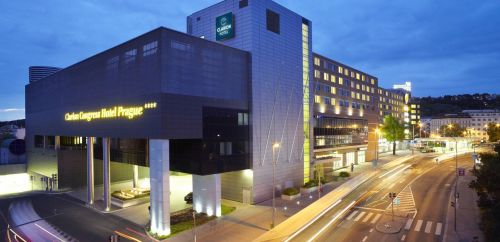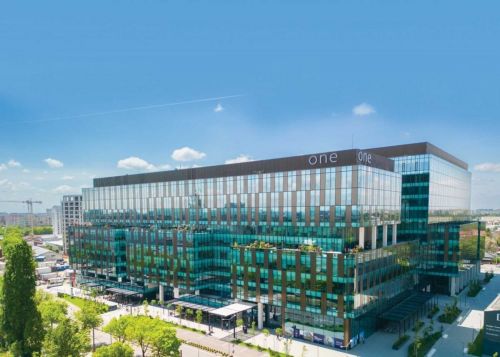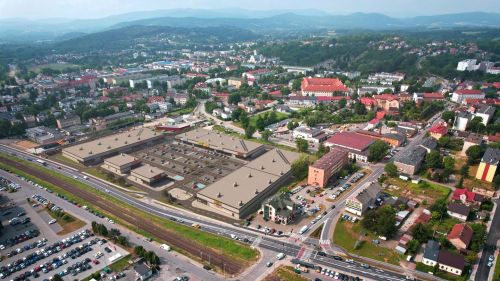Searching for real value
Facility ManagementAlex Hayes
Google can provide us with a wealth of information. It even features pictures of buildings from the street level. But does it allow valuers to cut corners, such as remotely viewing a property? and what would be the consequences?
In the silicon age, we increasingly us find ourselves seated throughout our working day in front of a screen tapping away at keyboards and endangering our health with repetitive strain injury. Indeed, much of the work that was commonplace a mere twenty years ago has now become obsolete with the advent of the internet. The net has brought other benefits, such as not needing to memorise an encyclopaedia for those times when we need to know say the mass of the sun (1.99x1030kg) ? Wikipedia is a mere mouse click away. It's not that we have become lazier, but it's just that the work we now do is just that bit more physically undemanding. So when a valuer is confronted with the legal obligation to visit a property, why bother when no one is checking? In Poland, once the required examination has been passed and a licence issued by the Ministry of Transport and Maritime Economy, valuers are free to practise their trade wherever and however they like in the country. Surely for a Warsaw-based valuer assessing a building in Kraków, Google Maps and Google Maps Street View could replace the need to travel to view the property?
When it comes to apartments, a valuation is indeed just a click away. Wycenter.pl offers automated valuations based on the area, size and condition of the building. The valuations are based on similar transactions with a regularly updated database that goes back to 1996 and are carried out with a minimum of eight comparisons. As for the accuracy of the valuations: ?In the case of typical dwellings the reliability is very high. Our innovative algorithm is the result of many years of research into the field of automated valuation models conducted by our team. Of course, we commissioned an independent study on our evaluation algorithm reliability. The results have been more than satisfactory, claims Radosław Trojanek, a member of the board of Wycenter.pl. The free online valuation strengthens the company?s online presence, and for those who are willing to pay, the company offers a more in-depth analysis of an apartment?s value. But as Mr Trojanek points out: ?We all are real estate investors in some sense. We own, rent or plan to buy a property. There is no better way to verify that than a realistic, objective valuation.
However, when it comes to commercial properties, such automated valuations are useless, claims Przemysław Błaszkiewicz, an associate director of Colliers International?s valuation and advisory services. However, just as Wycenter.pl compares properties with recent transactions, Polish law also favours valuations based on the sales of similar properties. But this is not the only method by which a valuation can be made. Often direct comparisons are not possible, and in such cases other methodologies such as the income method may be applied. With this assessment method, the value of a property is calculated as a function of its yield, yet sometimes even this method is inapplicable. In such cases a building that generates no income (such as a server hub might), may be valued using a replacement cost depreciation model. The facility is valued at the cost of its replacement minus the depreciation costs incurred by the building?s age. Theoretically, all of these approaches should generate the value for which the property can be sold on the market, but the very fact that the industry prefers the comparison approach clearly indicates that this method is considered to be the most accurate in terms of assessing prices.
What a satellite sees
However, this method is not without its flaws, which is why Krzysztof Urbańczyk, the president of the Polish Federation of Valuers? Associations, claims that ?the approach for each building must be individual. No two buildings are the same, there are only similar ones.? In a valuation report the description of the property may stretch to ten pages and the eventual cash figure is largely dependent on what is written. As Krzysztof Urbańczyk believes: ?Valuation is the art of argumentation. You have to say how much a property is worth and why.? It should come as no surprise that there is a legal obligation to view the property and that the valuer must visit each floor of the building. For Mr Błaszkiewicz, Google Maps is no replacement for viewing the property in person. He tells the story of a building located next to a farmer?s field in Kraków. For some reason the elevation of the field was higher than the property being valued. Frequently water would run off the field causing the property to flood, but such inconveniences remain invisible to satellite imagery. There are other problems connected with assessments based on Google Maps. Neighbouring facilities are of great importance to the value of properties ? who wants to live next to a landfill or nuclear reactor? But it is difficult to assess how land is being used with Google Maps. Believe it or not, according to Mr Błaszkiewicz satellite pictures of allotments can look exactly the same as graveyards. Worse still, Google Maps is infrequently updated, sometimes showing photographs that are years out of date. As anyone living on the outskirts of Warsaw can attest, much can be built within the space of a couple of years. This is not to say that Google Maps is completely worthless in valuing properties. Before the advent of Google it was much more difficult to judge the distances between shopping centres and residential areas, and such information has a direct bearing on the price of a property. Moreover, Google Street View, which shows locations from the perspective of a passing motorist, may be useful when used as notes for a valuer who has already seen a property. But still, ?it is possible to misjudge the value of a property by up to 30 pct, if one only uses Google,? says Przemysław Błaszkiewicz.
Accessing the data
These are not the only pitfalls faced by an agoraphobic property valuer determined not to set foot outside the safety zone of the office. The comparison approach requires a valuer to find transaction data on similar properties to the one that is being valued. Under Polish law at least three transactions that have taken place within the last two years must be used for comparison. This data is available from the local authorities, but the records of such transactions are extremely fragmented, with each borough being responsible for how such data is stored and made available. Sometimes it is a question of paying a fee and making an online request for the required data, but often such information is only made available on site and this requires the valuer to travel to the local government department. In many cases it is only recently that such data has been transferred from paper to databases and its accuracy is sometimes questionable. Furthermore, the information is taken from notary deeds and not organised in regard to the use that valuers might put the information to. One common problem is that prices can be quoted without stating whether they are net or gross, which can add up to 23 pct to the actual price of a property. Whenever in doubt the valuer should not use the deed. A further problem is that often these records have been prepared by students at the cheapest cost. Mistakes can appear all too frequently. In Kraków the data is made available via email, whereas in Katowice the council insists on the presence of the valuer. In Katowice, the council admitted to the possibility of typing errors in the data, but stressed that all the original notary deeds had been scanned, and so the information is easy to verify. Indeed, the valuer has a legal obligation to read the original deeds anyway. Before this information was digitised, it would take an entire day to sort through the records, which would not only contain property deeds but also other documentation pertaining to the properties, according to Przemysław Błaszkiewicz. This, however, represents some progress. ?I?ve spent eight years in valuation. When I started, every visit to the coucnil was like an anecdote. Now they treat you like a client. In a small town of 30,000 people they offered me coffee. They did everything they could to provide a good service, he adds.
Nonetheless, these are not the only data the valuer needs to obtain. The perpetuity books as well as the local zoning plan also need to be looked at. The perpetuity books are the main record of the ownership of the land. They also provide information about mortgages and encumbrances on a property, as well as access rights and information regarding sewage and plumbing. This information is available from the courts or online, and is accessible for everybody. Again, mistakes may appear in the data, but this time the valuer is legally obliged to state what is written, and if the information is perceived to be mistaken, this should also be stated in the valuation. Occasionally it is not possible to carry out an official valuation; in such cases Colliers International prepares an expertise report instead. (Such reports may also be drawn up in cases where someone does not wish to alert the owner to the fact that he is interested in purchasing a property, or in other cases when for some reason access to data about the property is limited).
When comparisons do not work
In practice, the comparison method does not work for retail facilities, claims Mr Błaszkiewicz. It is almost impossible to find reliable benchmarks for such properties, so their valuations have to be based almost exclusively upon yields. The internet is almost useless for this, because there is a requirement for every single tenancy agreement to be read. Even chimneys may generate income through leases to mobile telephone networks that need platforms to attach their radio antennae to. A high-rise office building in the centre of Warsaw may have around 20 contracts with various telecoms. According to Mr Błaszkiewicz, there are chimneys that generate revenues of hundreds of thousands of złoty. Again, the job of the valuer is to check. On average a 45,000 sqm mall will have between 150 and 250 lease agreements, all of which the valuer has to read.
But what is stopping someone from basing valuations entirely on web tools? Such a maverick would be risking more than their professional reputation. Valuers are financially liable for their mistakes. As a result a legal requirement exists for licensed valuers to be insured up to at least EUR 250,000. However, according to Krzysztof Urbańczyk, almost all valuers in Poland are insured by PZU. ?To date it has not paid out for a single valuer, as far as I know, he says. This does not mean that valuers never make mistakes. The Ministry of Transport, Construction and Maritime Economy has set up a professional ethics committee for valuers, with the power to take away a valuers licence. Krzysztof Urbańczyk claims that this does happen occasionally, normally for a limited period of time, although the committee has the power to revoke a licence permanently. To base a valuation only on web tools is ?absolutely impossible, claims Krzysztof Urbańczyk. As he explains: To say that you can give a valuation over the internet is duping people. It isn't a true valuation. It?s the same as asking if you like my car. Well you haven't seen it so how do you know? But on the other hand, no one knows exactly how many licensed property valuers are working in Poland. The Ministry of Transport, Construction and Maritime Economy keeps a register of all the licences it has issued, but the names of those who die or retire are not removed. ?Krzysztof Urbańczyk estimates that there are app. ?4,000 professional valuers in Poland, based on the 3,600 members of the 24 associations in the federation. So it seems quite credible that, as Przemysław Błaszkiewicz suspects, if it's possible, there?s probably someone doing it.
When it comes to apartments, a valuation is indeed just a click away. Wycenter.pl offers automated valuations based on the area, size and condition of the building. The valuations are based on similar transactions with a regularly updated database that goes back to 1996 and are carried out with a minimum of eight comparisons. As for the accuracy of the valuations: ?In the case of typical dwellings the reliability is very high. Our innovative algorithm is the result of many years of research into the field of automated valuation models conducted by our team. Of course, we commissioned an independent study on our evaluation algorithm reliability. The results have been more than satisfactory, claims Radosław Trojanek, a member of the board of Wycenter.pl. The free online valuation strengthens the company?s online presence, and for those who are willing to pay, the company offers a more in-depth analysis of an apartment?s value. But as Mr Trojanek points out: ?We all are real estate investors in some sense. We own, rent or plan to buy a property. There is no better way to verify that than a realistic, objective valuation.
However, when it comes to commercial properties, such automated valuations are useless, claims Przemysław Błaszkiewicz, an associate director of Colliers International?s valuation and advisory services. However, just as Wycenter.pl compares properties with recent transactions, Polish law also favours valuations based on the sales of similar properties. But this is not the only method by which a valuation can be made. Often direct comparisons are not possible, and in such cases other methodologies such as the income method may be applied. With this assessment method, the value of a property is calculated as a function of its yield, yet sometimes even this method is inapplicable. In such cases a building that generates no income (such as a server hub might), may be valued using a replacement cost depreciation model. The facility is valued at the cost of its replacement minus the depreciation costs incurred by the building?s age. Theoretically, all of these approaches should generate the value for which the property can be sold on the market, but the very fact that the industry prefers the comparison approach clearly indicates that this method is considered to be the most accurate in terms of assessing prices.
What a satellite sees
However, this method is not without its flaws, which is why Krzysztof Urbańczyk, the president of the Polish Federation of Valuers? Associations, claims that ?the approach for each building must be individual. No two buildings are the same, there are only similar ones.? In a valuation report the description of the property may stretch to ten pages and the eventual cash figure is largely dependent on what is written. As Krzysztof Urbańczyk believes: ?Valuation is the art of argumentation. You have to say how much a property is worth and why.? It should come as no surprise that there is a legal obligation to view the property and that the valuer must visit each floor of the building. For Mr Błaszkiewicz, Google Maps is no replacement for viewing the property in person. He tells the story of a building located next to a farmer?s field in Kraków. For some reason the elevation of the field was higher than the property being valued. Frequently water would run off the field causing the property to flood, but such inconveniences remain invisible to satellite imagery. There are other problems connected with assessments based on Google Maps. Neighbouring facilities are of great importance to the value of properties ? who wants to live next to a landfill or nuclear reactor? But it is difficult to assess how land is being used with Google Maps. Believe it or not, according to Mr Błaszkiewicz satellite pictures of allotments can look exactly the same as graveyards. Worse still, Google Maps is infrequently updated, sometimes showing photographs that are years out of date. As anyone living on the outskirts of Warsaw can attest, much can be built within the space of a couple of years. This is not to say that Google Maps is completely worthless in valuing properties. Before the advent of Google it was much more difficult to judge the distances between shopping centres and residential areas, and such information has a direct bearing on the price of a property. Moreover, Google Street View, which shows locations from the perspective of a passing motorist, may be useful when used as notes for a valuer who has already seen a property. But still, ?it is possible to misjudge the value of a property by up to 30 pct, if one only uses Google,? says Przemysław Błaszkiewicz.
Accessing the data
These are not the only pitfalls faced by an agoraphobic property valuer determined not to set foot outside the safety zone of the office. The comparison approach requires a valuer to find transaction data on similar properties to the one that is being valued. Under Polish law at least three transactions that have taken place within the last two years must be used for comparison. This data is available from the local authorities, but the records of such transactions are extremely fragmented, with each borough being responsible for how such data is stored and made available. Sometimes it is a question of paying a fee and making an online request for the required data, but often such information is only made available on site and this requires the valuer to travel to the local government department. In many cases it is only recently that such data has been transferred from paper to databases and its accuracy is sometimes questionable. Furthermore, the information is taken from notary deeds and not organised in regard to the use that valuers might put the information to. One common problem is that prices can be quoted without stating whether they are net or gross, which can add up to 23 pct to the actual price of a property. Whenever in doubt the valuer should not use the deed. A further problem is that often these records have been prepared by students at the cheapest cost. Mistakes can appear all too frequently. In Kraków the data is made available via email, whereas in Katowice the council insists on the presence of the valuer. In Katowice, the council admitted to the possibility of typing errors in the data, but stressed that all the original notary deeds had been scanned, and so the information is easy to verify. Indeed, the valuer has a legal obligation to read the original deeds anyway. Before this information was digitised, it would take an entire day to sort through the records, which would not only contain property deeds but also other documentation pertaining to the properties, according to Przemysław Błaszkiewicz. This, however, represents some progress. ?I?ve spent eight years in valuation. When I started, every visit to the coucnil was like an anecdote. Now they treat you like a client. In a small town of 30,000 people they offered me coffee. They did everything they could to provide a good service, he adds.
Nonetheless, these are not the only data the valuer needs to obtain. The perpetuity books as well as the local zoning plan also need to be looked at. The perpetuity books are the main record of the ownership of the land. They also provide information about mortgages and encumbrances on a property, as well as access rights and information regarding sewage and plumbing. This information is available from the courts or online, and is accessible for everybody. Again, mistakes may appear in the data, but this time the valuer is legally obliged to state what is written, and if the information is perceived to be mistaken, this should also be stated in the valuation. Occasionally it is not possible to carry out an official valuation; in such cases Colliers International prepares an expertise report instead. (Such reports may also be drawn up in cases where someone does not wish to alert the owner to the fact that he is interested in purchasing a property, or in other cases when for some reason access to data about the property is limited).
When comparisons do not work
In practice, the comparison method does not work for retail facilities, claims Mr Błaszkiewicz. It is almost impossible to find reliable benchmarks for such properties, so their valuations have to be based almost exclusively upon yields. The internet is almost useless for this, because there is a requirement for every single tenancy agreement to be read. Even chimneys may generate income through leases to mobile telephone networks that need platforms to attach their radio antennae to. A high-rise office building in the centre of Warsaw may have around 20 contracts with various telecoms. According to Mr Błaszkiewicz, there are chimneys that generate revenues of hundreds of thousands of złoty. Again, the job of the valuer is to check. On average a 45,000 sqm mall will have between 150 and 250 lease agreements, all of which the valuer has to read.
But what is stopping someone from basing valuations entirely on web tools? Such a maverick would be risking more than their professional reputation. Valuers are financially liable for their mistakes. As a result a legal requirement exists for licensed valuers to be insured up to at least EUR 250,000. However, according to Krzysztof Urbańczyk, almost all valuers in Poland are insured by PZU. ?To date it has not paid out for a single valuer, as far as I know, he says. This does not mean that valuers never make mistakes. The Ministry of Transport, Construction and Maritime Economy has set up a professional ethics committee for valuers, with the power to take away a valuers licence. Krzysztof Urbańczyk claims that this does happen occasionally, normally for a limited period of time, although the committee has the power to revoke a licence permanently. To base a valuation only on web tools is ?absolutely impossible, claims Krzysztof Urbańczyk. As he explains: To say that you can give a valuation over the internet is duping people. It isn't a true valuation. It?s the same as asking if you like my car. Well you haven't seen it so how do you know? But on the other hand, no one knows exactly how many licensed property valuers are working in Poland. The Ministry of Transport, Construction and Maritime Economy keeps a register of all the licences it has issued, but the names of those who die or retire are not removed. ?Krzysztof Urbańczyk estimates that there are app. ?4,000 professional valuers in Poland, based on the 3,600 members of the 24 associations in the federation. So it seems quite credible that, as Przemysław Błaszkiewicz suspects, if it's possible, there?s probably someone doing it.





















































